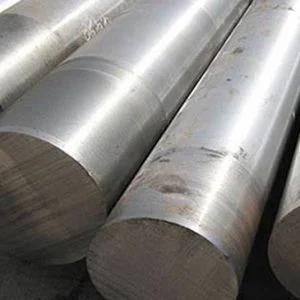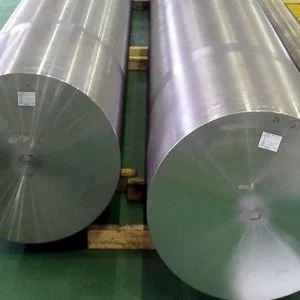Introduction

In the realm of modern manufacturing, material selection plays a critical role in determining the performance, durability, and cost-effectiveness of finished products. One material that has garnered significant attention for its diverse applications and superior properties is steel carbon alloy. This blog explores the benefits of steel carbon alloy, shedding light on its characteristics, applications, and advantages in contemporary manufacturing processes. Whether you are involved in construction, automotive, or machinery industries, understanding steel carbon alloy can help you make informed decisions about material choice and application.
What Is Steel Carbon Alloy?
Definition and Composition
Steel carbon alloy is a type of steel that combines iron with carbon and other alloying elements to enhance its properties. The key components typically include:
- Iron: The primary element forming the base of the steel.
- Carbon: Added to improve strength and hardness.
- Alloying Elements: Such as manganese, chromium, and nickel, which further modify the steel’s characteristics.
Types of Steel Carbon Alloys
- Low Carbon Steel: Contains up to 0.3% carbon; known for its malleability and ductility.
- Medium Carbon Steel: Contains 0.3% to 0.6% carbon; offers a balance between strength and ductility.
- High Carbon Steel: Contains 0.6% to 1.4% carbon; known for its hardness and wear resistance.
Advantages of Steel Carbon Alloy
Enhanced Strength and Durability
Steel carbon alloy is renowned for its exceptional strength and durability, making it suitable for demanding applications. The addition of carbon and other alloying elements improves the tensile strength, making it ideal for use in heavy machinery, structural components, and automotive parts.
Improved Hardness and Wear Resistance
One of the standout features of carbon alloy steel is its hardness. Higher carbon content results in increased hardness, which enhances wear resistance. This makes it an excellent choice for components subjected to abrasive conditions, such as gears, shafts, and cutting tools.
Versatility in Applications
Steel carbon alloy’s versatility makes it applicable across various industries. From construction and automotive to aerospace and manufacturing, its properties can be tailored to meet specific requirements through alloying and heat treatment processes.
Cost-Effectiveness
Compared to other high-strength materials, carbon alloy steel is relatively cost-effective. Its availability and ease of processing contribute to lower production costs, making it an economical choice for both small-scale and large-scale manufacturing projects.
Customizable Properties
Steel carbon alloy can be engineered to achieve specific properties by adjusting the carbon content and adding various alloying elements. This customization allows manufacturers to optimize the material for particular applications, ensuring the best performance for each use case.
Applications of Steel Carbon Alloy
Construction Industry
In construction, carbon alloy steel is used for structural beams, columns, and reinforcements due to its strength and durability. Its ability to withstand heavy loads and harsh conditions makes it essential for building infrastructure.
Automotive Industry
Steel carbon alloy plays a crucial role in the automotive industry, where it is used in engine components, chassis parts, and drivetrain systems. Its strength and wear resistance ensure the longevity and reliability of vehicles.
Machinery and Tools
High-carbon steel alloys are commonly used in machinery and cutting tools. The hardness and wear resistance of these alloys make them suitable for manufacturing tools, blades, and industrial components that experience significant stress and friction.
Aerospace Industry
In aerospace, carbon alloy steel is utilized for its high strength-to-weight ratio. Components such as landing gear and structural supports benefit from the material’s durability and performance under extreme conditions.
Oil and Gas Industry
The oil and gas industry uses carbon alloy steel for pipelines, drilling equipment, and other critical components. The material’s resistance to corrosion and mechanical stress is vital for ensuring the safety and reliability of operations.
Comparison of Steel Carbon Alloy with Other Materials
To better understand the benefits of steel carbon alloy, it is helpful to compare it with other materials commonly used in manufacturing:
Comparison Table: Steel Carbon Alloy vs. Stainless Steel vs. Aluminum
| Property | Steel Carbon Alloy | Stainless Steel | Aluminum |
|---|---|---|---|
| Strength | High | Moderate | Low |
| Hardness | High | Moderate to High | Low |
| Wear Resistance | Excellent | Good | Poor |
| Corrosion Resistance | Moderate | Excellent | Good |
| Cost | Cost-Effective | Expensive | Moderate |
| Weight | Heavy | Heavy | Lightweight |
| Customizability | High | Moderate | Low |
Factors to Consider When Choosing Steel Carbon Alloy

Application Requirements
Assess the specific requirements of your application, including strength, hardness, and wear resistance. Choose a carbon alloy steel grade that aligns with these needs to ensure optimal performance.
Environmental Conditions
Consider the environmental conditions to which the material will be exposed. Factors such as temperature, humidity, and potential for corrosion should influence your choice of alloy.
Cost and Budget
Evaluate the cost implications of using carbon alloy steel compared to other materials. Factor in the total cost of ownership, including production, processing, and maintenance.
Processing and Fabrication
Steel carbon alloy may require specific processing techniques, such as heat treatment or machining. Ensure that your manufacturing capabilities align with the processing needs of the selected alloy.
Supplier and Quality Assurance
Choose a reputable supplier that provides high-quality carbon alloy steel. Ensure that the material meets industry standards and specifications to guarantee performance and reliability.
Conclusion
Steel carbon alloy offers numerous benefits in modern manufacturing, including enhanced strength, durability, and cost-effectiveness. Its versatility and customizable properties make it a valuable material for a wide range of applications across various industries.
By understanding the advantages and applications of steel carbon alloy, manufacturers can make informed decisions that optimize performance and efficiency. Whether you are involved in construction, automotive, aerospace, or machinery, steel carbon alloy is a reliable and effective choice for meeting your material needs.
FAQ
Q: What is the difference between low, medium, and high carbon steel alloys?
A: Low carbon steel contains up to 0.3% carbon and is known for its malleability. Medium carbon steel has 0.3% to 0.6% carbon and offers a balance between strength and ductility. High carbon steel contains 0.6% to 1.4% carbon and is known for its hardness and wear resistance.
Q: Why is steel carbon alloy considered cost-effective?
A: Steel carbon alloy is cost-effective due to its relatively low material costs, availability, and ease of processing. Its properties can be customized to meet specific needs without significant expense.
Q: How does steel carbon alloy compare to stainless steel?
A: Steel carbon alloy generally has higher strength and hardness but lower corrosion resistance compared to stainless steel. Stainless steel is more resistant to corrosion but is typically more expensive.
Q: What are common applications for high-carbon steel alloys?
A: High-carbon steel alloys are commonly used in machinery and tools, such as cutting blades, gears, and industrial components, due to their hardness and wear resistance.
Q: What factors should be considered when selecting a steel carbon alloy for a specific application?
A: Factors to consider include the application requirements (strength, hardness, wear resistance), environmental conditions, cost and budget, processing and fabrication needs, and the quality of the material from the supplier.
